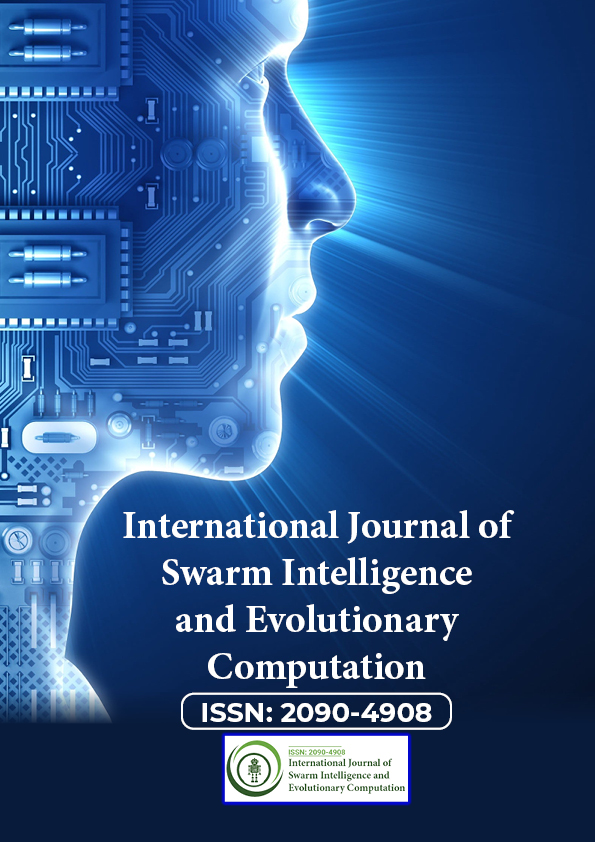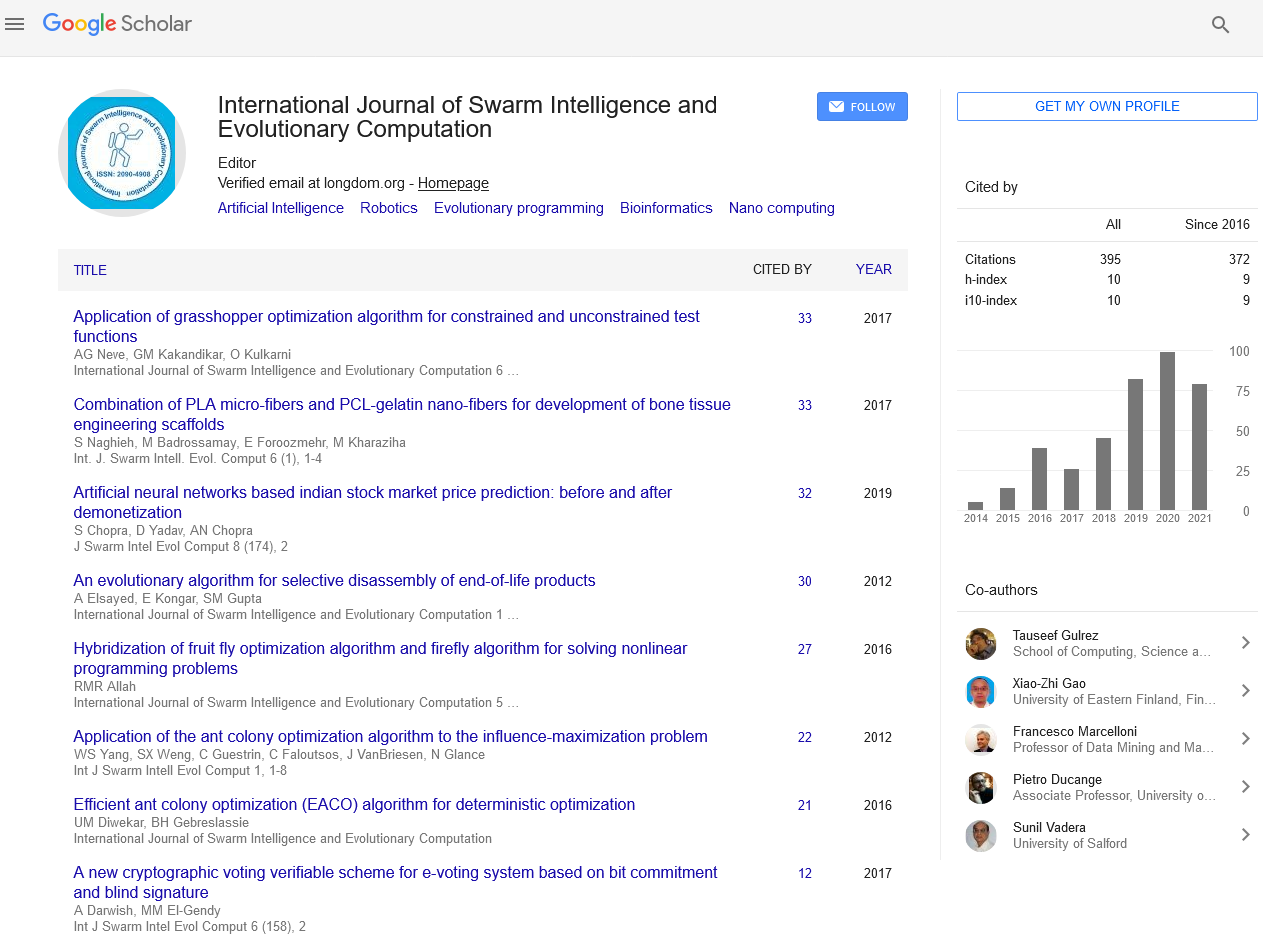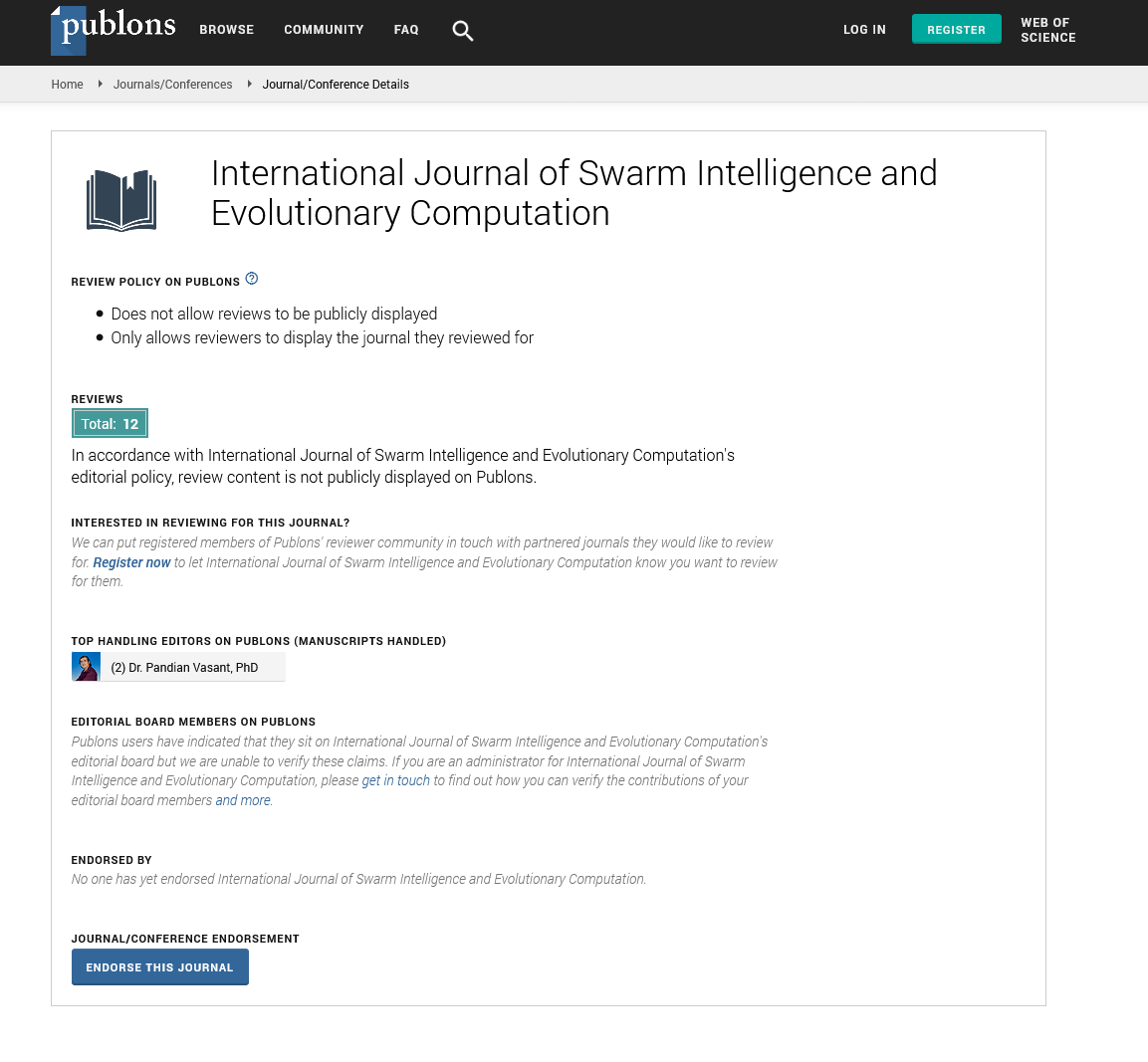Indexed In
- Genamics JournalSeek
- RefSeek
- Hamdard University
- EBSCO A-Z
- OCLC- WorldCat
- Publons
- Euro Pub
- Google Scholar
Useful Links
Share This Page
Journal Flyer

Open Access Journals
- Agri and Aquaculture
- Biochemistry
- Bioinformatics & Systems Biology
- Business & Management
- Chemistry
- Clinical Sciences
- Engineering
- Food & Nutrition
- General Science
- Genetics & Molecular Biology
- Immunology & Microbiology
- Medical Sciences
- Neuroscience & Psychology
- Nursing & Health Care
- Pharmaceutical Sciences
Perspective - (2022) Volume 11, Issue 8
Neural Network Structures for Pattern Recognition
Vibhav Sharma*Received: 18-Jul-2022, Manuscript No. SIEC-22-18057; Editor assigned: 21-Jul-2022, Pre QC No. SIEC-22-18057 (PQ); Reviewed: 09-Aug-2022, QC No. SIEC-22-18057; Revised: 18-Aug-2022, Manuscript No. SIEC-22-18057 (R); Published: 30-Aug-2022, DOI: 10.35248/2090-4908.22.11.269
Description
A neural network is a set of algorithms that attempts to recognize underlying relationships in a batch of data using a technique similar to how the human brain works. In this context, neural networks are systems of neurons that might be organic or artificial in nature. Artificial Neural Networks (ANNs) are a subset of machine learning that serve as the foundation for deep learning approaches. Their name and shape are derived from the human brain, and they mimic how actual neurons communicate with one another.
ANNs are made up of node layers, each with an input layer, one or more hidden layers, and an output layer. Each node, or artificial neuron, is interconnected and has its own weight and threshold. If a node's output surpasses a predefined threshold, the node is activated and begins sending data to the network's next tier.
Pattern Recognition
Recognizing concrete items entails recognizing spatial and temporal items. Fingerprints, weather maps, photos, and tangible things are examples of spatial items. Waveforms and signatures are examples of temporal things. Recognizing abstract stuff include recognizing a solution to a problem, an old dialogue or dispute, and so on.
Fingerprint recognition, voice recognition, face recognition, character recognition, signature recognition, and object categorization are examples of applications in scientific/research fields such as astronomy, engineering, statistics, medicine, machine learning, and neural networks. The process of recognizing an item requires three stages of processing: input filtering, feature extraction, and classification.
Filtering is the process of removing undesired information or data from an input stream. The filter algorithm or method will vary depending on the application. Consider the identification of fingerprints. The scanned result may alter each time we scan our fingerprints with a fingerprint reader. The difference could be due to a change in contrast, brightness, or the image's background. We may only require the lines in the fingerprints to process the input and not the other elements or backdrop of the fingerprint. A filter mechanism is required to remove the undesirable portion of the image and replace it with a white background. Once the image has been filtered by the filter mechanism, we will have normal clean finger prints with only lines, which will aid in the feature extraction process.
The process of studying and generating usable information from filtered input patterns is known as feature extraction. The resulting information may consist of general properties that are evaluated to facilitate further processing. For example, in image recognition, the extracted features will include information on the images grey shade, texture, shape, or context. This is the primary data utilized in picture processing. Application-specific feature extraction methods and extracted features.
Conclusion
Pattern recognition can be performed on both standard computers and neural networks. Traditional arithmetic methods are used by computers to determine whether a given pattern matches an existing one. It is a simple procedure. Neural networks, on the other hand, can withstand noise and, if properly trained, will respond correctly to unfamiliar patterns. Neural networks may not perform miracles, but when built correctly and trained with adequate data, they can provide results not only in pattern recognition but also in other scientific and commercial applications.
Citation: Sharma V (2022) Neural Network Structures for Pattern Recognition. Int J Swarm Evol Comput. 11:269.
Copyright: © 2022 Sharma V. This is an open-access article distributed under the terms of the Creative Commons Attribution License, which permits unrestricted use, distribution, and reproduction in any medium, provided the original author and source are credited.


